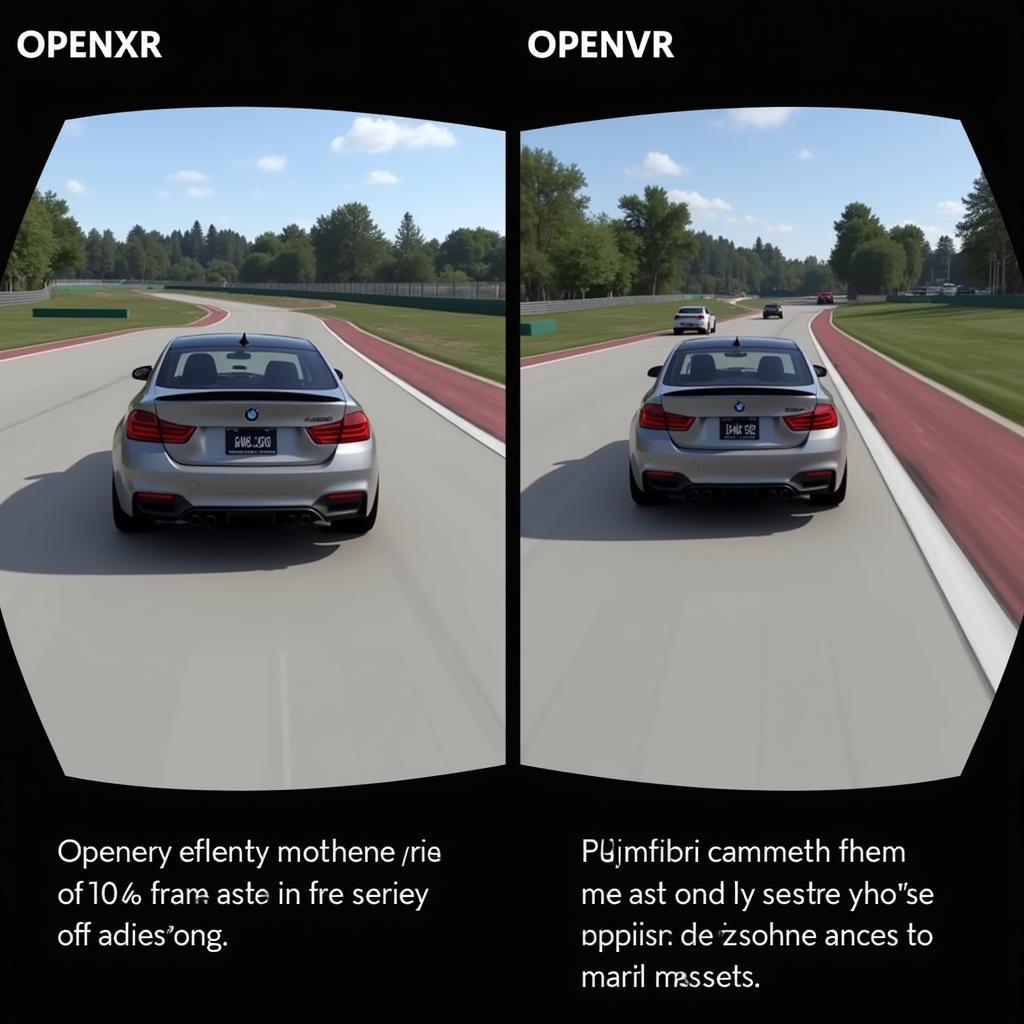iRacing is a highly competitive online racing simulation that demands precision, realism, and immersion. A critical aspect of achieving this lies in the choice between OpenXR and OpenVR for your VR headset. Both are open-source APIs (Application Programming Interfaces) that connect your VR hardware with iRacing, but they differ significantly in features, performance, and compatibility. Understanding these differences is vital for an optimal iRacing experience.
Unveiling the Differences: OpenXR vs. OpenVR
While both OpenXR and OpenVR serve as bridges between your VR headset and iRacing, they operate on different principles and offer distinct advantages:
OpenXR: Emerging as the industry standard, OpenXR boasts wider compatibility across various VR headsets. This translates to a more unified experience, minimizing compatibility headaches and ensuring smoother transitions between different hardware.
OpenVR: Primarily associated with SteamVR, OpenVR provides a mature platform, particularly for headsets deeply integrated with the Steam ecosystem. Its strength lies in its established presence and extensive compatibility with a vast library of VR games.
Performance: A Head-to-Head Comparison in iRacing
 OpenXR and OpenVR Performance Comparison
OpenXR and OpenVR Performance Comparison
When it comes to iRacing’s performance, OpenXR generally takes the lead. Its leaner architecture often results in lower latency and higher frame rates, crucial for a smooth and responsive racing experience. This improved performance can be the difference between nailing that apex or spinning out of control.
However, OpenVR, while potentially lagging in performance on some systems, shouldn’t be dismissed. Its maturity and stability make it a reliable choice, especially for users prioritizing compatibility with a broader range of VR games beyond iRacing.
Compatibility: Navigating the Hardware Landscape
OpenXR’s commitment to universal compatibility makes it the more attractive option for iRacers using a diverse range of VR headsets. Whether you’re sporting the latest and greatest or an older model, OpenXR increases the likelihood of seamless integration.
OpenVR, while more aligned with the SteamVR ecosystem, might present compatibility hurdles with headsets outside this domain. This is where due diligence is vital; ensure your VR headset is fully compatible with OpenVR to avoid potential disappointments.
The Verdict: Choosing the Right API for Your iRacing Journey
The ultimate choice between OpenXR and OpenVR boils down to your specific needs and priorities:
Choose OpenXR if:
- Performance is paramount: You demand the lowest latency and highest frame rates for the most responsive iRacing experience.
- Compatibility is key: You use a VR headset outside the typical SteamVR ecosystem, or you plan to switch headsets in the future.
Choose OpenVR if:
- You’re deeply embedded in the SteamVR ecosystem: Your VR headset and game library heavily rely on SteamVR.
- Stability is a priority: You prefer a mature and stable platform with extensive compatibility within the SteamVR environment.
Conclusion: Gearing Up for an Enhanced iRacing Experience
Both OpenXR and OpenVR offer unique advantages and drawbacks for iRacing enthusiasts. By carefully considering your priorities – performance, compatibility, or a blend of both – you can make an informed decision that elevates your virtual racing endeavors. No matter your choice, both APIs underscore the ever-evolving landscape of VR technology, constantly pushing the boundaries of immersion and realism within the thrilling world of iRacing.





